Welcome to another edition of Willoughby Hills!
This newsletter explores topics like history, culture, work, urbanism, transportation, travel, agriculture, self-sufficiency, and more.
My parents were station wagon people. They drove a Toyota Tercel wagon, a Ford Taurus wagon, and a Toyota Camry wagon for most of my childhood.
But we were definitely the odd balls. None of my friend’s parents had station wagons. As a child of the 1980s and 1990s, nearly every car parked at school concerts or baseball games was a minivan, more specifically a Dodge Caravan (and its variants the Plymouth Voyager and Chrysler Town and Country).
The Dodge Caravan made its debut with the 1984 model year and it was an immediate sensation.
The minivans of my childhood were a far cry from the models available now. There was only one sliding door to enter the back, located on the passenger side. The rear seats were all bench seats, with the middle row seating two and the back row seating three. None of the back windows actually fully opened, they just tilted out slightly.
Still, anytime I rode in a minivan as a child, I knew I wanted one someday.
Minivan sales peaked in 2000 when I was in high school, and they have declined steadily since then, making up only 2.8% of U.S. car sales in 2018. The minivan was dethroned in popularity by SUVs and other crossovers, which gave the illusion of being larger and more spacious. But were they really better?
Even though minivans have been going through a bit of a resurgence in the last few years, when I bought my Honda Odyssey nine years ago, they were still decidedly not cool. But I don’t care. I’m a proud minivan driver!
Today, I wanted to explore some of the reasons I fell in love with minivans long before I ever owned one and look at what their utility and adaptability might teach us.
They’re Relatively Efficient
The 1984 Dodge Caravan was rated at between 18-22 miles per gallon, depending on the engine and transmission configurations. My 2015 Honda Odyssey is rated at 22 miles per gallon.
There are certainly more fuel efficient cars available, but not that are as versatile as a minivan.
The closest equivalents to my van are the full size SUV Honda Pilot (rated at 20 miles per gallon for the 2015 model year) or the pickup truck Honda Ridgeline (17 miles per gallon in 2014). The Odyssey edges both of them out.
Newer vans are even more efficient. Honda is now the only automaker to not offer a hybrid minivan in the 2025 model year, although the others that are in the market are impressive.
Toyota’s Sienna Hybrid (first released in 2021) is rated at 36 miles per gallon, and the new for 2025 Kia Carnival Hybrid is rumored to be rated around 32 miles per gallon. Both of these are traditional hybrids that use both gas and battery power simultaneously to power and drive the car.
The Chrysler Pacifica Hybrid has the lowest rating of the bunch, 30 miles per gallon, but it’s actually the most interesting to me because it is a plug in hybrid. Essentially, it works like an electric vehicle for the first roughly 32 miles of driving. Only after the battery is depleted does the gas engine kicks in.
In theory, many people’s daily commutes can be done in full electric mode without ever using gas. Reading though owner experiences on forums confirms that, with some people going more than 4,000 miles on a single tank of gas because they mostly drive in electric mode!
There’s a lot that really appeals to me about how Chrysler approached this hybrid model. It solves for the “range anxiety” issue that prevents many potential buyers from going fully electric. That range anxiety also pushes manufacturers to offer electric cars with 300 mile+ ranges, when most drivers need far less most of the time.
A hybrid with a shorter range allows for a smaller battery on board, meaning the mining of minerals like lithium, nickel, and copper can be stretched further with a hybrid than a fully electric car. (The mining of these minerals is cause for environmental concern.)
I wish other manufacturers took this same approach with not only their minivans but their other cars as well. In addition to our van, my wife drives a CRV-Hybrid and we used to both drive a Honda Insight, which was a hybrid similar to the Toyota Prius. In both cases, the gas and battery work in conjunction, but neither can operate independently, except for at very low speeds for electric power. They improved our gas mileage, but still required regular fuel ups.
Having a car that can meet most people’s daily needs with a small battery but has extended gas range when needed seems like something that we need more of across all styles of vehicle.
They Haul
The first time I remember seeing a minivan used to haul gear was when I was producing a pubic access TV show in high school. We had invited a local Christian punk rock band to perform in our studio (the early aughts were a strange time).
The band arrived with a beat up old Caravan with the seats removed. Their minivan was the perfect cargo hauler for their amps, drum kit, and other rock gear. I was smitten.
Later, in my work as a young production assistant on This Old House, minivans came back on my radar. Whenever we would travel for a story, we checked several hard cases of camera, lighting, and sound equipment at the airport and then rented a car upon landing.
In my early days with the show, we would usually rent a large SUV like a Ford Explorer, thinking their size would hold more. Our gear would take up the entire trunk and the back seat, which had to be folded flat. This meant the vehicle carrying our gear could only hold two passengers in the front seats. The SUV was also quite high off the ground, and every inch counts when lifting cases that are 40-50 pounds each.
One time, on a fluke, I happened to get a minivan as a rental car and I never looked back after that. All of the gear our gear fit in the minivan with only the third row seats folded, meaning the van could still haul passengers in the center row. This meant we could rent one less car on each trip, because more people could fit in the van. And the lower height of the trunk made it SO much easier to load and unload all of those camera cases.
My own Honda Odyssey has been quite the utility vehicle for me over the last nine years as well. With both rows of seats out of the way, I can fit any 4’x8’ sheet goods like plywood or drywall.
Having driven pickup trucks during my time at This Old House as well, I prefer loading a minivan to loading a pickup truck any day for most any project. The bonus is a van is weather protected in a way a truck bed isn’t, so I don’t have to worry about unloading everything right away to keep it out of the rain or snow, or have concerns that items sitting in an open bed might be stolen.
As we were moving this past year, I was able to fill the minivan nearly to the brim on several occasions, shuttling oddly shaped items or fragile things between our old and new house as needed.
Minivans can be set up to tow as well, with my Honda Odyssey being rated to tow 3,500 pounds. I can’t pull a large camping trailer or boat with it, but I can certainly tow a utility trailer or a popup camper with no issue.
They’re Pretty Comfortable
Minivans are not the only cars on the road to offer three rows of seating, but they are the most comfortable in my opinion. In many larger SUVs with a third row option, the third row seems like an afterthought tacked on as a selling feature, rather than an integrated piece of the design.
I once had to ride in the third row of a GMC Yukon and found it to be very uncomfortable. The third row was located right over the rear axle, and the wheel wells protruded into the foot room for the third row. I was riding around with my knees near my chin, it wasn’t fun.
Minivans also still have a usable trunk even with the third row seats in use, whereas most SUVs either give you use of the trunk or use of the third row, but not both simultaneously.
The bench seats of my childhood friend’s vans have been replaced with more comfortable captain’s chairs. Again, I used to haul four adults in a minivan for shoots all around the country and everybody had their own space and was comfortable. (In the case of Honda, the design team behind the first generation Odyssey was inspired by the interiors of a private jet and bullet trains.)
For children, car seats are easy to install and easy to access through the sliding doors (which are now on both sides of the van). This was one of the main reasons we went with a van initially.
Because they can be spacious for passengers and still haul luggage, we opt for a minivan whenever possible as a rental car when traveling. We find it just makes the trip easier.
Final Thoughts
I’ve written before about my admiration for things that can do multiple things well and can morph and adapt as circumstances dictate. A minivan is a perfect example of that idea. It’s designed for lots of different purposes and can be endlessly customizable to fit a variety of needs and life stages. (Minivans are often customized for those with mobility issues or requiring use of a wheelchair as well).
A smaller car is certainly more fuel efficient, but it becomes more difficult to carry passengers and cargo well. Try fitting lumber in a Honda Fit! Updated hybrid models, especially plug-ins, help make minivans more efficient.
While a pickup truck may be able to tow more or hold larger pieces of cargo (like trees, water heaters, or bulk landscape materials like mulch or gravel), minivans can handle everyday runs to stores like Home Depot. I recently hauled an electric stove and oven in my minivan!
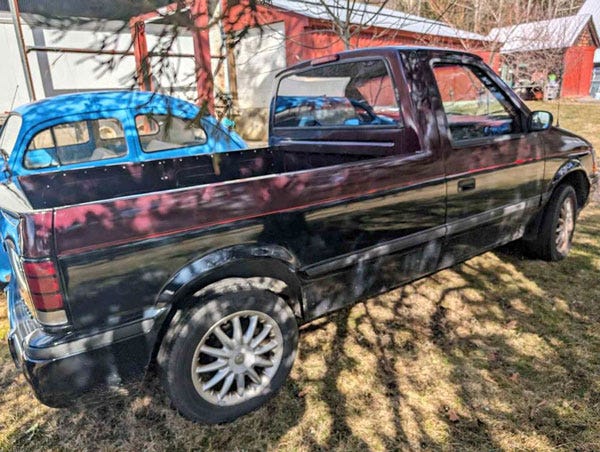
While researching this piece, I stumbled upon a Facebook Marketplace listing for a 1998 Dodge Caravan that was converted into a pickup truck. The work was done by a professional body shop and is certainly eye catching, but it also feels wholly unnecessary and kind of misses the point.
A minivan is a chameleon that can transform into whatever you need it to be and then can change back. By taking a van body and making its rear permanently a pickup truck, it feels limiting rather than liberating.
In closing, I should reiterate that my Honda Odyssey is nine years old and has something like 125,000 miles on it. It’s been to Ohio, South Carolina, New York, Ontario, and more several times. I intend to still drive it for a long time to come.
It’s not flashy or eye catching: it doesn’t have aftermarket rims, a spoiler, or a killer sound system. Like a good pair of jeans or worn in cowboy boots, it’s built to last, adapts well to nearly any situation, and fits just perfectly.
Do you drive a minivan? Is it something you love or did you trade it in as soon as your kids were out of carseats? Would you ever consider buying one or does it scream “Soccer Mom” to you? I’d love to hear your thoughts in the comments!
Thanks for reading Willoughby Hills! Subscribe for free to receive new posts and support my work.
Related Reading
If you’ve missed past issues of this newsletter, they are available to read here.





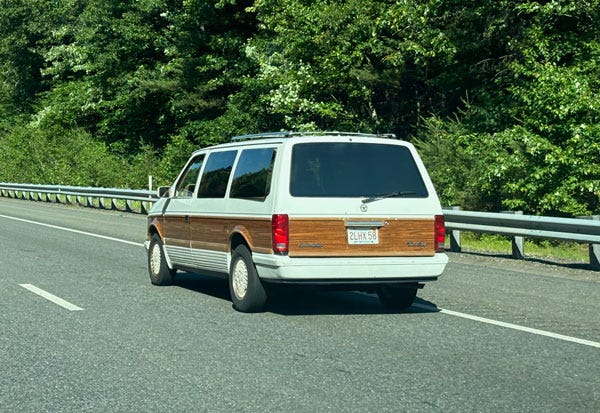
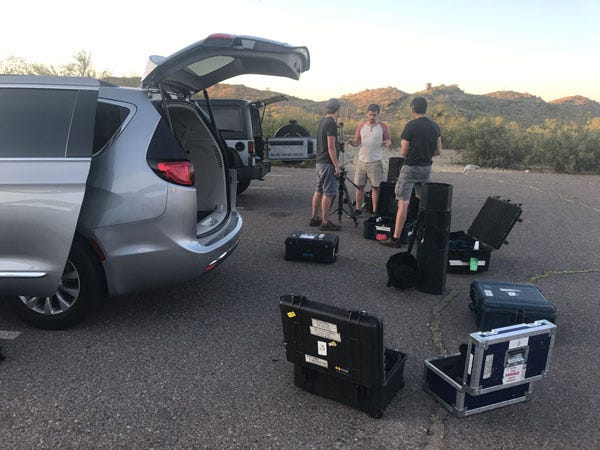
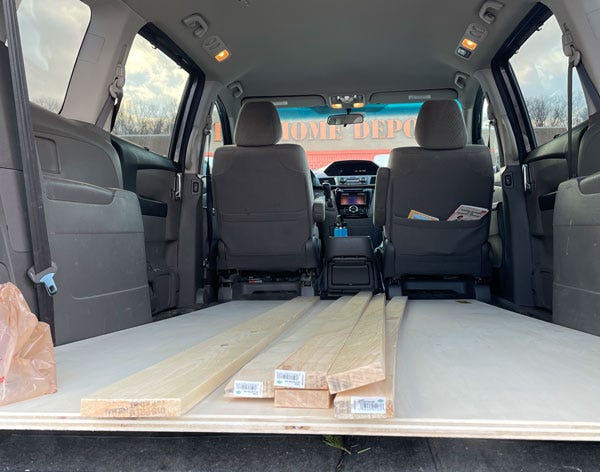
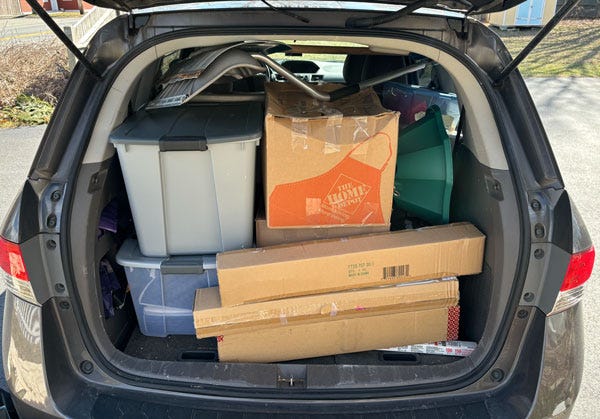
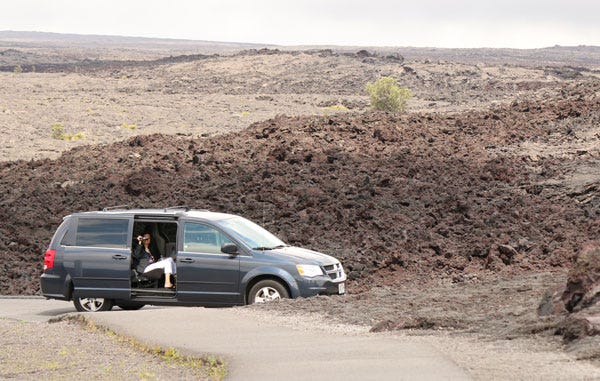
I drove an Odyssey for about 10 years. I will admit I was glad to trade it! I drive an Accord now. Minivans definitely say Soccer Mom to me! But I can appreciate their cargo ability. That Odyssey would have been very handy a few weeks ago when we moved our daughter back to school.